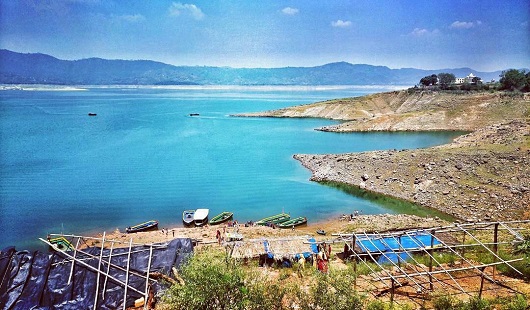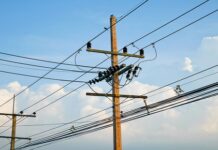The Bhakra reservoir’s water level is down by about 55 feet and Ranjit Sagar’s by almost 100 feet from last year’s corresponding day reading of monsoon.
Bhakra’s level is at 1,600.2 feet against last year’s 1,654.8 feet, while worst-affected Ranjit Sagar has fallen to 1,617.7 feet from last year’s 1,720.3 feet. Pong Dam’s water is at 1,315.2 feet, down 59 feet from last year’s 1375.5 feet.
All the four hydroelectric units at Ranjit Sagar are running, but the inflow in the reservoir is lower than the last two months’ outflow.This year, Punjab’s monsoon rainfall is less than half of July’s normal average, so the demand for electricity surges to more than 15,000 megawatts every day. Last year, Punjab and Himachal Pradesh had received a heavy rainfall, which had increased the level of their reservoirs. Last year’s swell helped Ranjit Sagar increase its output of electricity by 10% and produce 155 lakh units (LUs) daily for the last 10 days. On July 23 last year, the dam had produced 157.9 LU of power.
The Punjab State Power Corporation Limited (PSPCL) ran all four 150-MW units of the project over and above its declared value, and each of those generated 160 MW electricity. This year, PSPCL’s own daily supply of hydroelectricity is 193 LU, while last year it was 211 LU due to very heavy inflow. The utility has operated all the four units round the clock for the last 10 days, at about 140 MW. IT supplied a record 3,667 LU on July 21 this year without any official power cuts. On Tuesday, the supply was 3,598 LU.
This July, Punjab’s power consumption has increased by 24% from last year. Until July 23, the daily figure was 3,246 LU as opposed to 2,628 LU in the corresponding period last year. Chief engineer (hydel projects) Tarandeep Singh said: “The increased power demand due to paddy season has forced PSPCL to use all its resources, including hydro-electric ones. Last year, we had to open the floodgates to contain a flood situation, but this year we have rain deficit even in the catchments, so the water level is down.”
He said: “The dams are in a filling period. Ranjit Sagar is for irrigation primarily and power generation is its extra benefit.” A retired PSPCL officer said: “We shouldn’t compare this year’s water level with last year’s. The more water we release for maximum power generation, the more problems we’ll create next year, when we’ll have less water for irrigation.”




